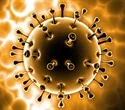After its sudden debut more than 3 years ago, COVID-19 has created tremendous global fear. Despite the fact that the SARS-CoV-2 virus, which produces COVID-19, is currently the target of very effective vaccines, researchers are still investigating new SARS-CoV-2 variants in order to protect the public health and develop global preventive strategies against new variants. The SARS-CoV-2 Omicron XBB.1.5 strain, which is predominant in the Western hemisphere, has recently been found to have a high transmissibility and infectivity by a team of researchers lead by Japanese scientists.
SARS-CoV-2, or the severe acute respiratory syndrome coronavirus, has been linked to millions of fatalities globally. Although new vaccinations have been developed to combat COVID-19, researchers are continually on the lookout for new varieties that could circumvent vaccine resistance and endanger the health of the entire world’s population. The novel SARS-CoV-2 Omicron XBB.1.5 strain, which was discovered for the first time in October 2022, has recently been successfully characterized by a team of researchers lead by Japanese scientists. On January 31, 2023, their research was released in volume 23 of The Lancet Infectious Diseases.
Because the Omicron XBB.1.5 variation can spread more quickly than earlier variants and has the potential to cause more severe problems, senior author Prof. Kei Sato from the Division of Systems Virology, The Institute of Medical Science.
While studying emerging variants of the SARs-CoV-2 Omicron lineage, the research team made a startling discovery: the SARS-CoV-2 Omicron XBB.1.5 variant has a novel mutation in the spike (S) protein—the protein that anchors the virus firmly to the human angiotensin converting enzyme-2 (ACE2) receptor, thus facilitating the invasion of human cells. The serine-to-proline amino acid mutation noted at residue no. 486 in the S protein is virologically concerning because of a variety of reasons.
Sharing his concerns, first author Keiya Uriu from the Division of Systems Virology, Department of Microbiology and Immunology, The University of Tokyo, Japan, says, “In late 2022, the SARS-CoV-2 Omicron BQ.1 and XBB lineages, characterized by amino acid substitutions in the S protein and increased viral fitness, had become predominant in the Western and Eastern Hemisphere, respectively. In 2022, we elucidated the characteristics of a variety of newly emerging SARS-CoV-2 Omicron subvariants. At the end of 2022, the XBB.1.5 variant, a descendant of XBB.1 that acquired the S:S486P substitution, emerged and was rapidly spreading in the USA.”





